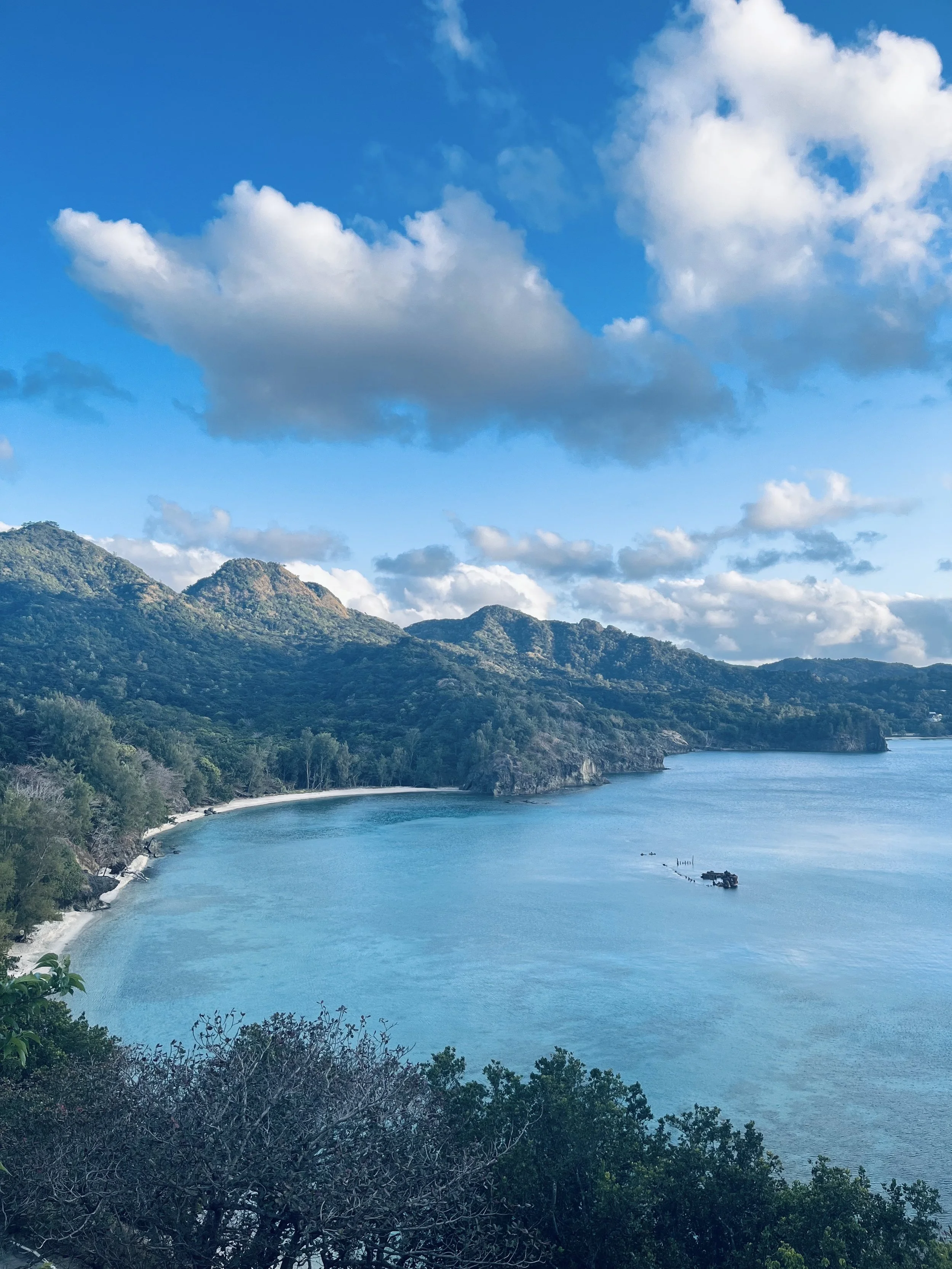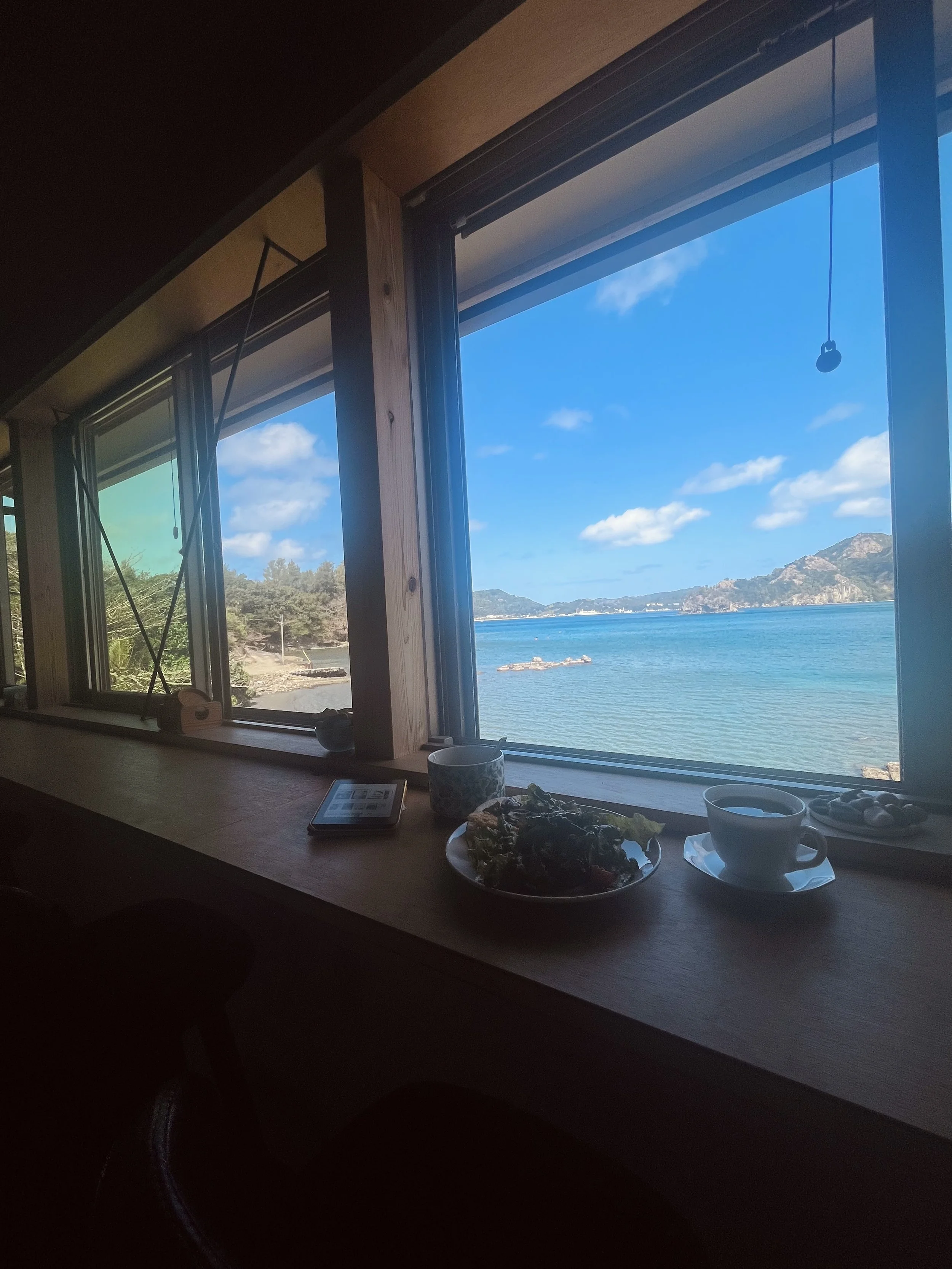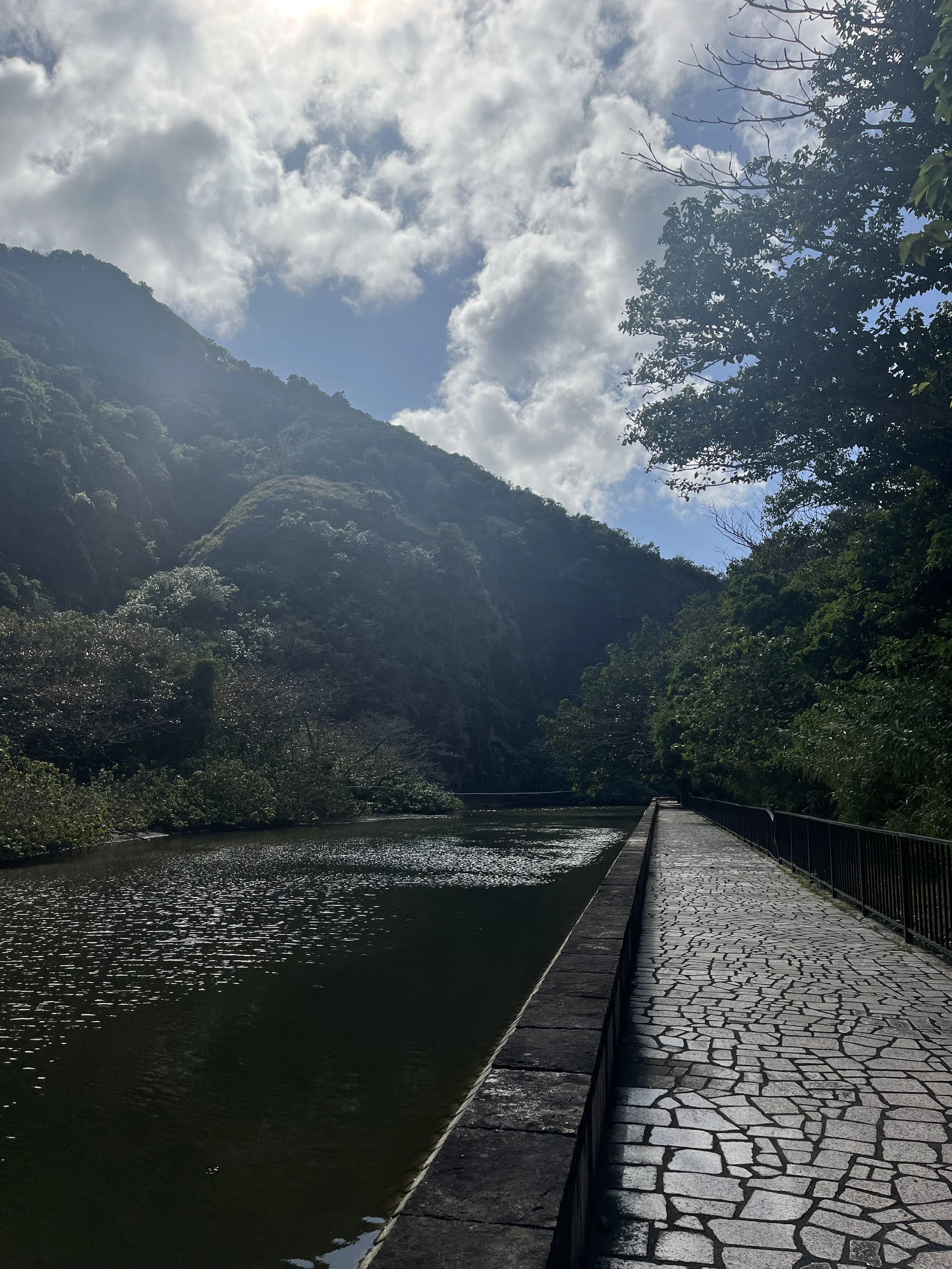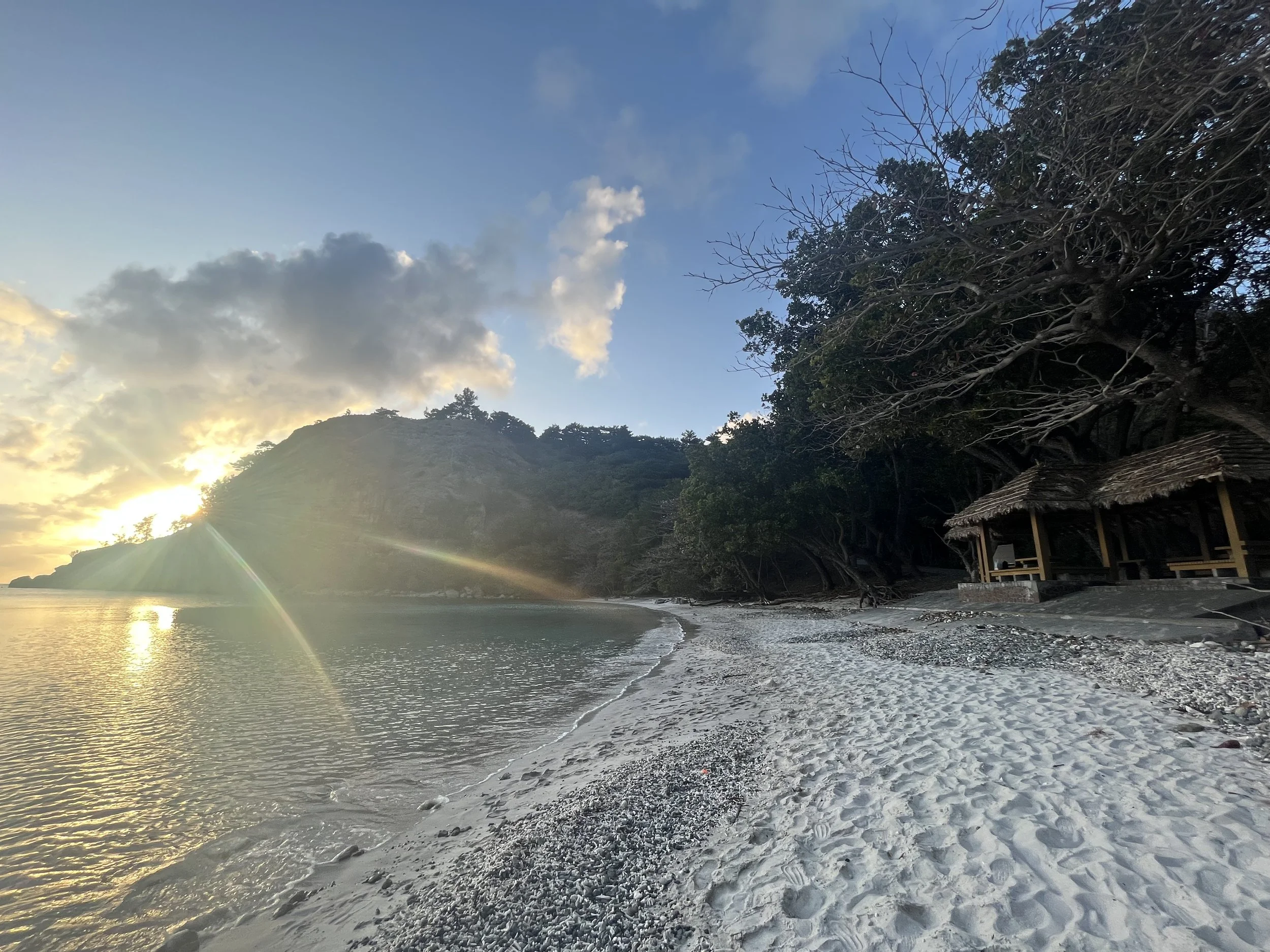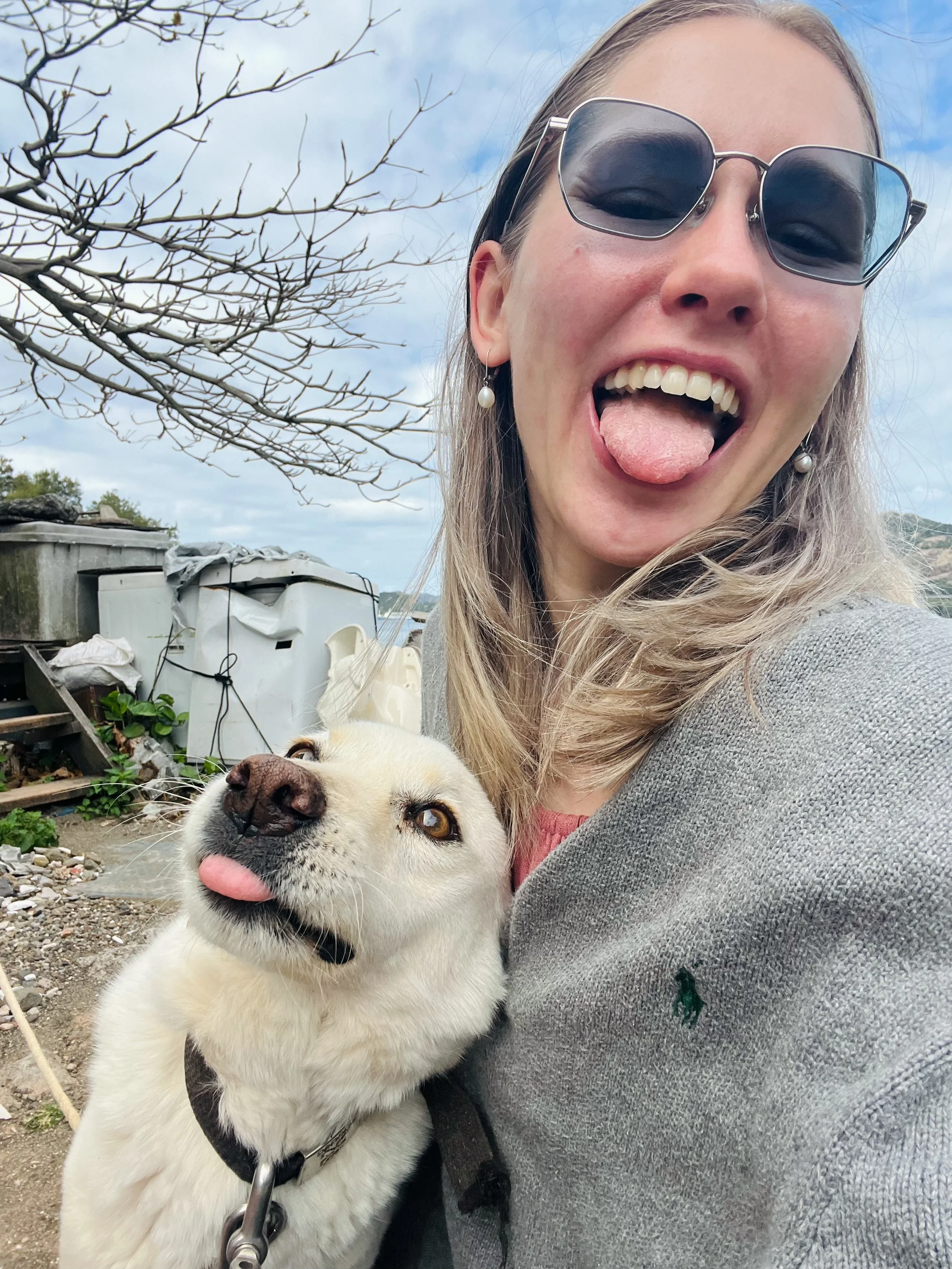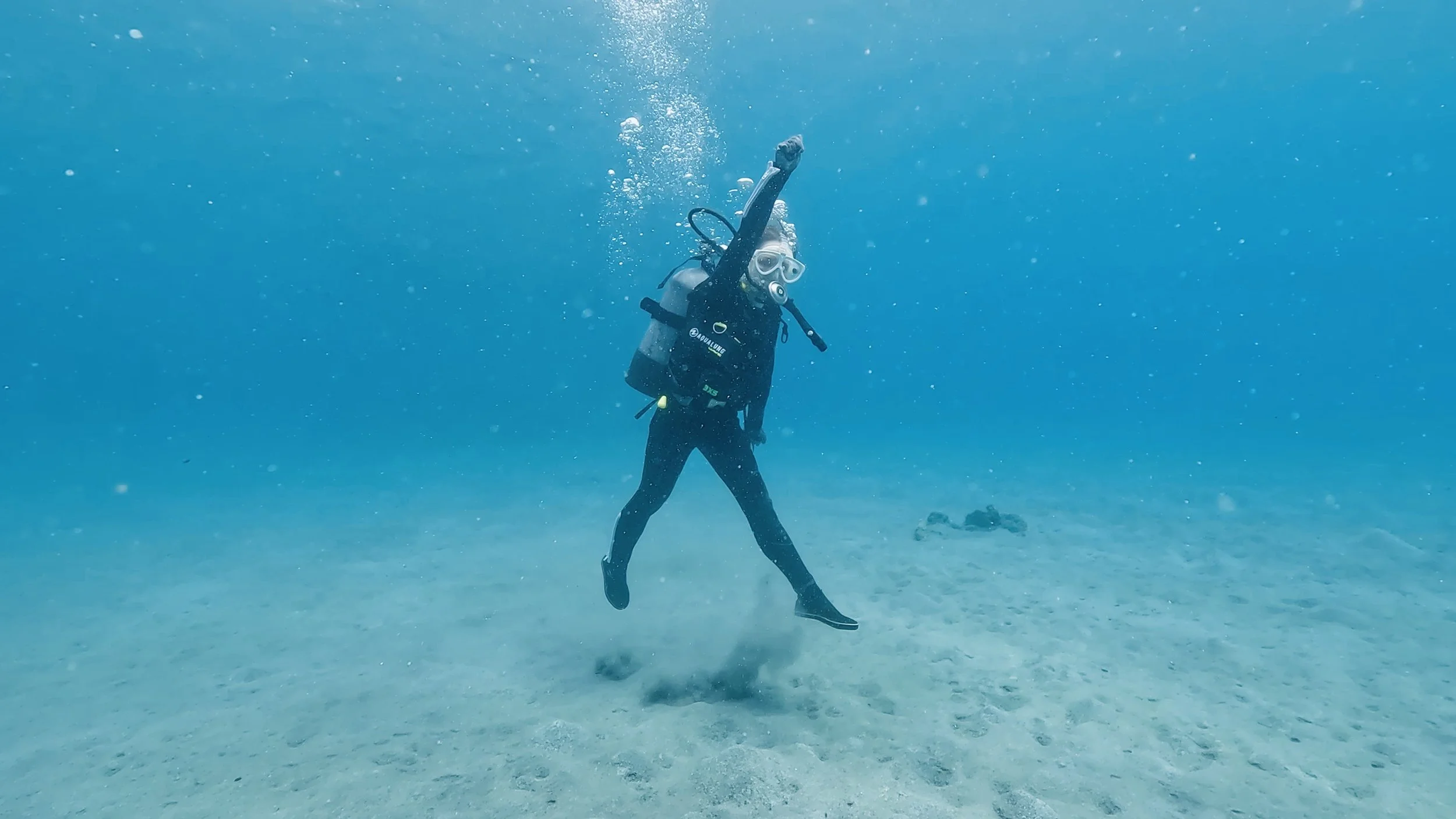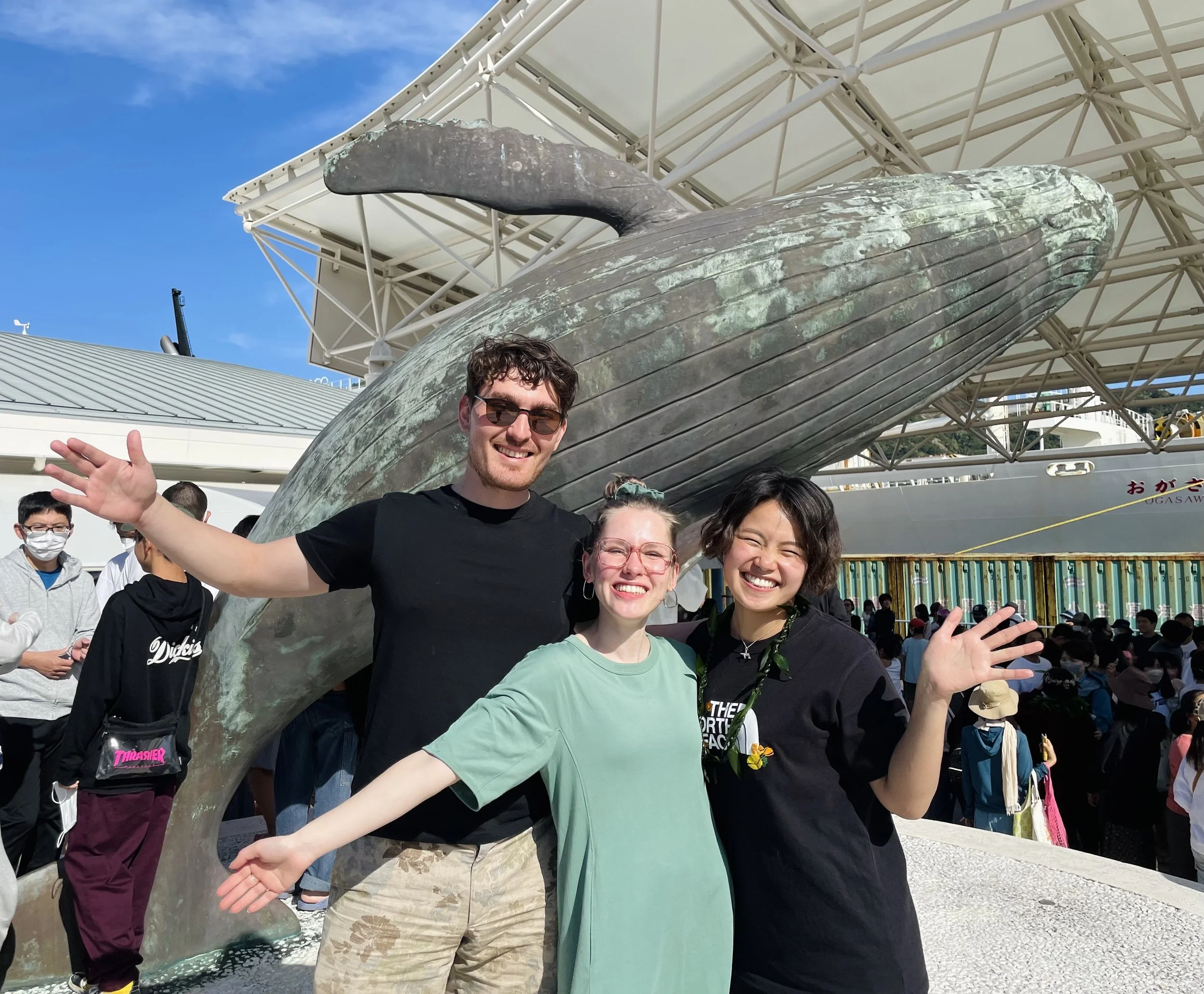UNESCO’s Hidden Gem — The Slow Rhythm of Ogasawara, Tokyo
Of all the places I’ve travelled, this journey stays with me the most. Reaching Chichijima, one of Tōkyō’s remote Ogasawara Islands, takes twenty-four hours by ferry. No flights, no internet, only sea and silence. Yet in that distance I found something I hadn’t expected: the rare kind of connection that doesn’t need a signal.
The Long Ferry Ride: An Intimate Journey
The Ogasawara Maru leaves Tōkyō in the morning, and as the skyline fades into haze, so does the network. The phone signal vanishes, and with it the rhythm of constant checking. There’s nowhere else to go, nothing urgent to do. Passengers settle into their assigned berths — economy berths fitted with individual curtains and electric outlets, or higher-class cabins with private showers and toilets — paying anywhere from approximately 30.000 ¥ – 95.000 ¥ for the overnight voyage. Most choose to sleep in the shared cheaper dormitories.
The ferry first winds through Tōkyō Bay, offering glimpses of the Rainbow Bridge and Odaiba before passing the Izu Islands and cutting into open ocean for the night. Somewhere between boredom and calm, my thoughts begin to move at the same pace as the waves. The ferry sails through open ocean for a full day and night. The Ogasawara Maru departs from Tōkyō roughly once every three to four days during peak season, with frequency reduced to weekly service during quieter months. The single ferry remains the archipelago’s lifeline; there are no airports on the islands (yet), and the journey permits no shortcuts. For the isolated communities of Chichijima and Hahajima — home to approximately 2.100 and 460 residents respectively — this vessel represents the cord connecting them to Japan’s capital and, by extension, to the wider world. Food, mail, guests, and stories all arrive together once a week. When the ship docks, the entire port becomes a celebration of boxes, hugs, and laughter. And a run to the supermarket for the best food!
Arrival in Bonin Blue
The next morning, the ocean changes colour. Locals call it Bonin Blue. A shade so luminous it seems invented by the sea itself. This distinctive hue stems from the islands’ unique geography: the Ogasawara archipelago consists of approximately thirty volcanic islands, clustered roughly 1,000 kilometres south of Tōkyō. The particular clarity and depth of the surrounding waters, combined with the subtropical light and minimal pollution, create an azure intensity unmatched elsewhere in Japanese waters, surpassing even the celebrated seas of Okinawa by comparison. I’ve been to both!
My host greets me with an open smile. Only moments later I discover he’s half German, half Japanese. A detail so unexpected it makes me laugh out. I’ve crossed oceans and travelled farther than ever before, only to end up speaking German again. The world, I think, is mischievous and full of quiet magic.
Over the ride to his house he tells me he catches his own octopus, and before I can respond, he’s planning a Takoyaki night, taking me out free diving and introducing me to the personal stories of the weird characters gathered on the island. Later we sit together at the hot plate, rolling imperfect Takoyaki and stacking wooden Jenga blocks. I’ve brought cold cans from the vending machine outside — that unmistakable sign that, no matter how far you go, you’re still in Japan. 自動販売機 Jidōhanbaiki! The sound of familiarity in an unfamiliar place. There’s no rush.
A Layered History: From Settlement to Reversion
Understanding Chichijima requires understanding its improbable origins. The Ogasawara Islands were uninhabited until 1830, when an extraordinary assembly of pioneers arrived: five Westerners—including the English seaman Nathaniel Savory from Massachusetts and Matteo Mazzaro, a British citizen from what is now Croatia—alongside approximately twenty Native Hawaiians and a handful of other Pacific Islanders. This motley crew, sailing from Hawaii, established the first permanent settlement on Chichijima, transforming the previously desolate volcanic chain into an important resupply station for Pacific whaling vessels.
The early nineteenth-century settlement introduced a genetic and cultural mixing that persists to this day. The descendants of these pioneers, known locally as Ōbeikei (Europeans/Westerners), developed a unique Euronesian culture distinct from the Yamato, Ainu, or Ryūkyūan peoples. They spoke a creole English blended with Hawaiian, Japanese, and Portuguese influences, creating linguistic echoes of their diverse heritage.
Japan’s claim to the islands dates earlier in historical record—traditionally attributed to 1593, when Ogasawara Sadayori, a samurai official, visited the archipelago—but serious colonisation came much later. In 1862, the Tokugawa Shogunate dispatched a formal mission to assert Japanese sovereignty, and Japanese settlers began arriving from the Izu Islands. By 1876, Foreign Minister Terashima Munenori formally notified other nations that the Ogasawara Islands fell under Japanese jurisdiction, securing international recognition of Japan’s territorial claim.
Yet this transition was far from seamless. The Ōbeikei community and Japanese settlers coexisted in a complex cultural arrangement for over half a century, until the Second World War shattered the islands’ fragile equilibrium. In 1944, as Japan’s military situation deteriorated, the civilian population (around 6.886 people) was forcibly evacuated to the Japanese mainland. After Japan’s surrender, the United States occupied the islands militarily. Critically, American and European descendants were permitted to return in 1946, whilst ethnic Japanese evacuees remained barred from their homes for more than two decades. When Japan regained administrative control of the islands on 26 June 1968, the reversion triggered complex emotions: The Japanese government instituted new administrative structures, declared the islands a national park, and imposed strict environmental regulations. Hunting was banned; vast swathes were designated as protected reserves. For some, particularly younger Bonin Islanders educated in English during the American occupation, the reversion felt like a cultural displacement. One prominent islander, Rance Ōhira, whose mother, Kyōko, had maintained the Ōbeikei traditions during decades of change, initially found the restructured island alien to his childhood memories. He eventually emigrated to the United States, serving in the military for close to twenty years before the islands’ call proved irresistible. Returning to Chichijima in 1994, he established a bar called Yankee Town in the historic Ōbeikei neighbourhood, consciously preserving the cultural memory of those early days.
Encounters at the Edge of Tōkyō
During my two weeks on Chichijima I met a curious mix of people. The kind of lives that could only have crossed on an island like this. The kind that makes you believe in the good of humankind: an American teacher, sent here years ago through the JET Programme, still laughs when he tells me how surprised he was to learn that this, too, is Tōkyō. He fell in love, married a local woman, and never left.
Most islanders today earn their living from tourism: diving schools, whale-watching tours, or guesthouses. I booked a dive one morning and a whale-watching trip on another. On the way out to sea we spotted dolphins, and the captain slowed the boat so we could slip into the water. To float there, face-to-face with wild dolphins in the open Pacific, felt like stepping into another element entirely. Rarely have I ever felt more alive! For dolphin interactions, no more than four boats may approach a single pod, with a maximum of five swimmers permitted per boat. Tour operators work in coordination with the Ogasawara Village Tourism Association and the Whale Watching Association to enforce these guidelines voluntarily, recognising that sustainable tourism preserves both the animals' wellbeing and the long-term viability of their businesses.
Everywhere I went, I was one of the few visibly foreign faces. Yet the encounters felt open, unguarded. One older American man, almost blind, travelled with a friend who acted as his eyes. He still went diving and hiking. As long as I live, he told me, I’ll live the way I want. Why not? I always was a good cave diver in the dark! In the evenings he’d knocked at my door to share some beers and stories outside.
I met an architect from Tōkyō who invited me for coffee and spoke about the freedom of designing spaces in the city. And there was a Japanese woman I met on a dive boat, just traveling from Hokkaidō, where she’d jumped into the sea among Russian drift ice just a week before, and now she was swimming with dolphins under subtropical sun. Japan, I thought, contains every world within itself. How grateful I am to discover this in my own way.
My host, generous as always, lent me a small scooter so I could explore on my own. I rode along empty coastal roads, stopped at deserted beaches, and spent long hours lying in the sand with a book. Here, there’s no FOMO, no sense of missing out. The island teaches you a gentler pace — that sometimes, doing nothing is exactly what you came for. What you needed! After those two weeks I felt like part of the island, I walked into the supermarket greeting people.
Goodbye
The island’s isolation creates an unexpected intimacy. After two weeks, I had gathered a small circle of people. On the morning of departure they all came to the pier to see me off. As the Ogasawara Maru prepared to leave, the dock turned into a celebration. Laughter, shouts, the sound of camera shutters and engines warming up. A mix of joy and parting. When the ship finally pulled away, small fishing and dive boats followed close behind, weaving through the waves like a pack of dolphins. The sound of music carried across the water from the deck. People waved flags, sang, and even jumped into the sea, shouting farewells through the salt air. The scene was chaotic and utterly beautiful. I stood at the railing and felt tears rise — not from sadness, but from the rare beauty of it all. The sincerity, the shared humanity. In a world that moves too fast, this felt almost ancient: a community gathered simply to say goodbye. This, I thought, is what it means to leave a place that has truly let you in.
A UNESCO World Heritage Site
In 2011, the Ogasawara Islands received designation as a UNESCO World Natural Heritage Site, recognition of their extraordinary ecological value. The archipelago exemplifies isolated oceanic island ecosystems, hosting evolutionary processes visible nowhere else on Earth. If you ever visit this magical place please keep it magical. Booking well in advance is essential, particularly during peak seasons (February-April for whale watching, and June-October for dolphin activities).
Written and photographed by Isabelle Kullat, March 2023. A slow travel essay from Isabelle Kullat Studio.
